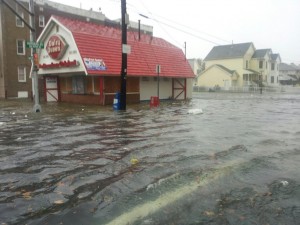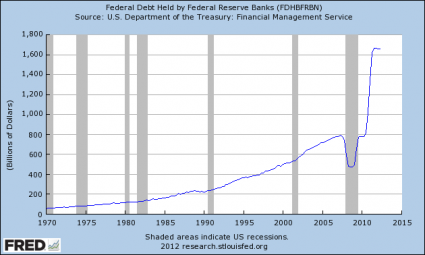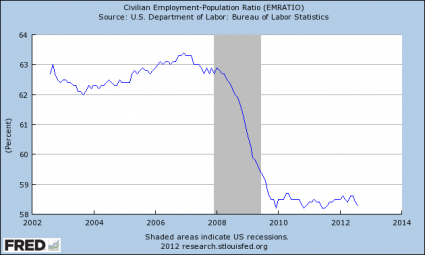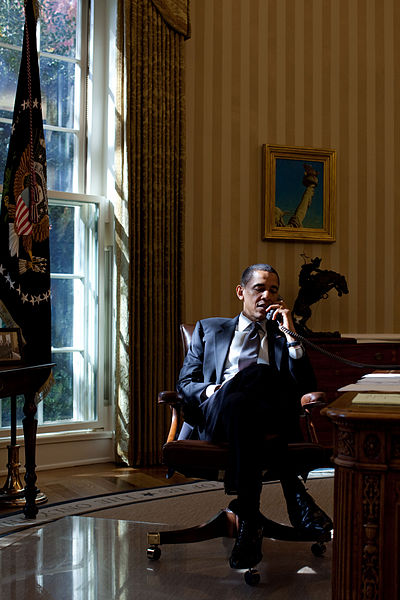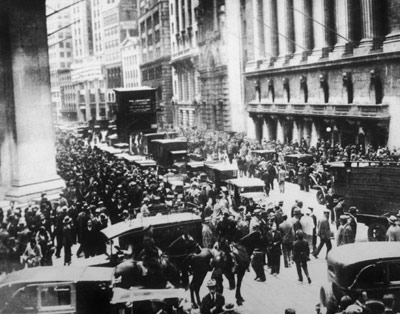 If you want to frighten Baby Boomers, just show them the list of statistics in this article. The United States is headed for a retirement crisis of unprecedented magnitude, and we are woefully unprepared for it. At this point, more than 10,000 Baby Boomers are reaching the age of 65 every single day, and this will continue to happen for almost the next 20 years. The number of senior citizens in America is projected to more than double during the first half of this century, and some absolutely enormous financial promises have been made to them. So will we be able to keep those promises to the hordes of American workers that are rapidly approaching retirement? Of course not. State and local governments are facing trillions in unfunded pension liabilities. Medicare is facing a 38 trillion dollar shortfall over the next 75 years. The Social Security system is facing a 134 trillion dollar shortfall over the next 75 years. Meanwhile, nearly half of all American workers have less than $10,000 saved for retirement. The truth is that I was being incredibly kind when I said earlier that we are “woefully unprepared” for what is coming. The biggest retirement crisis in history is rapidly approaching, and a lot of the promises that were made to the Baby Boomers are going to get broken.
If you want to frighten Baby Boomers, just show them the list of statistics in this article. The United States is headed for a retirement crisis of unprecedented magnitude, and we are woefully unprepared for it. At this point, more than 10,000 Baby Boomers are reaching the age of 65 every single day, and this will continue to happen for almost the next 20 years. The number of senior citizens in America is projected to more than double during the first half of this century, and some absolutely enormous financial promises have been made to them. So will we be able to keep those promises to the hordes of American workers that are rapidly approaching retirement? Of course not. State and local governments are facing trillions in unfunded pension liabilities. Medicare is facing a 38 trillion dollar shortfall over the next 75 years. The Social Security system is facing a 134 trillion dollar shortfall over the next 75 years. Meanwhile, nearly half of all American workers have less than $10,000 saved for retirement. The truth is that I was being incredibly kind when I said earlier that we are “woefully unprepared” for what is coming. The biggest retirement crisis in history is rapidly approaching, and a lot of the promises that were made to the Baby Boomers are going to get broken.
The following are 35 incredibly shocking statistics that will scare just about any Baby Boomer…
1. Right now, there are somewhere around 40 million senior citizens in the United States. By 2050 that number is projected to skyrocket to 89 million.
2. According to one recent poll, 25 percent of all Americans in the 46 to 64-year-old age bracket have no retirement savings at all.
3. 26 percent of all Americans in the 46 to 64-year-old age bracket have no personal savings whatsoever.
4. One survey that covered all American workers found that 46 percent of them have less than $10,000 saved for retirement.
5. According to a survey conducted by the Employee Benefit Research Institute, “60 percent of American workers said the total value of their savings and investments is less than $25,000”.
6. A Pew Research survey found that half of all Baby Boomers say that their household financial situations have deteriorated over the past year.
7. 67 percent of all American workers believe that they “are a little or a lot behind schedule on saving for retirement”.
8. Today, one out of every six elderly Americans lives below the federal poverty line.
9. More elderly Americans than ever are finding that they must continue working once they reach their retirement years. Between 1985 and 2010, the percentage of Americans in the 65 to 69-year-old age bracket that were still working increased from 18 percent to 32 percent.
10. Back in 1991, half of all American workers planned to retire before they reached the age of 65. Today, that number has declined to 23 percent.
11. According to one recent survey, 70 percent of all American workers expect to continue working once they are “retired”.
12. According to a poll conducted by AARP, 40 percent of all Baby Boomers plan to work “until they drop”.
13. A poll conducted by CESI Debt Solutions found that 56 percent of American retirees still had outstanding debts when they retired.
14. Elderly Americans tend to carry much higher balances on their credit cards than younger Americans do. The following is from a recent CNBC article…
New research from the AARP also shows that those ages 50 and over are carrying higher balances on their credit cards — $8,278 in 2012 compared to $6,258 for the under-50 population.
15. A study by a law professor at the University of Michigan found that Americans that are 55 years of age or older now account for 20 percent of all bankruptcies in the United States. Back in 2001, they only accounted for 12 percent of all bankruptcies.
16. Between 1991 and 2007 the number of Americans between the ages of 65 and 74 that filed for bankruptcy rose by a staggering 178 percent.
17. What is causing most of these bankruptcies among the elderly? The number one cause is medical bills. According to a report published in The American Journal of Medicine, medical bills are a major factor in more than 60 percent of the personal bankruptcies in the United States. Of those bankruptcies that were caused by medical bills, approximately 75 percent of them involved individuals that actually did have health insurance.
18. In 1945, there were 42 workers for every retiree receiving Social Security benefits. Today, that number has fallen to 2.5 workers, and if you eliminate all government workers, that leaves only 1.6 private sector workers for every retiree receiving Social Security benefits.
19. Millions of elderly Americans these days are finding it very difficult to survive on just a Social Security check. The truth is that most Social Security checks simply are not that large. The following comes directly from the Social Security Administration website…
The average monthly Social Security benefit for a retired worker was about $1,230 at the beginning of 2012. This amount changes monthly based upon the total amount of all benefits paid and the total number of people receiving benefits.
Could you live on about 300 dollars a week?
20. Social Security benefits are not going to stretch as far in future years. The following is from an article on the AARP website…
Social Security benefits won’t go as far, either. In 2002, benefits replaced 39 percent of the average retirees salary, and that will decline to 28 percent in 2030, when the youngest boomers reach full retirement age, according to the Center for Retirement Research at Boston College.
21. In the United States today, more than 61 million Americans receive some form of Social Security benefits. By 2035, that number is projected to soar to a whopping 91 million.
22. Overall, the Social Security system is facing a 134 trillion dollar shortfall over the next 75 years.
23. As I wrote about in a previous article, the number of Americans on Medicare is expected to grow from 50.7 million in 2012 to 73.2 million in 2025.
24. Medicare is facing unfunded liabilities of more than 38 trillion dollars over the next 75 years. That comes to approximately $328,404 for each and every household in the United States.
25. Today, only 10 percent of private companies in the U.S. provide guaranteed lifelong pensions for their employees.
26. Verizon’s pension plan is underfunded by 3.4 billion dollars.
27. In California, the Orange County Employees Retirement System is estimated to have a 10 billion dollar unfunded pension liability.
28. The state of Illinois has accumulated unfunded pension liabilities of more than 77 billion dollars.
29. Pension consultant Girard Miller told California’s Little Hoover Commission that state and local government bodies in the state of California have 325 billion dollars in combined unfunded pension liabilities.
30. According to Northwestern University Professor John Rauh, the latest estimate of the total amount of unfunded pension and healthcare obligations for retirees that state and local governments across the United States have accumulated is 4.4 trillion dollars.
31. In 2010, 28 percent of all American workers with a 401(k) had taken money out of it at some point.
32. Back in 2004, American workers were taking about 30 billion dollars in early withdrawals out of their 401(k) accounts every single year. Right now, American workers are pulling about 70 billion dollars in early withdrawals out of their 401(k) accounts every single year.
33. Today, 49 percent of all American workers are not covered by an employment-based pension plan at all.
34. According to a recent survey conducted by Americans for Secure Retirement, 88 percent of all Americans are worried about “maintaining a comfortable standard of living in retirement”.
35. A study conducted by Boston College’s Center for Retirement Research found that American workers are $6.6 trillion short of what they need to retire comfortably.
So what is the solution? Well, one influential organization of business executives says that the solution is to make Americans wait longer for retirement. The following is from a recent CBS News article…
An influential group of business CEOs is pushing a plan to gradually increase the full retirement age to 70 for both Social Security and Medicare and to partially privatize the health insurance program for older Americans.
The Business Roundtable’s plan would protect those 55 and older from cuts but younger workers would face significant changes. The plan unveiled Wednesday would result in smaller annual benefit increases for all Social Security recipients. Initial benefits for wealthy retirees would also be smaller.
But considering the fact that there aren’t nearly enough jobs for all Americans already, perhaps that is not such a great idea. If we expect Americans to work longer, then we are going to need our economy to start producing a lot more good jobs than it is producing right now.
Of course the status quo is not going to work either. There is no way that we are going to be able to meet the financial obligations that are coming due.
The federal government, our state governments and our local governments are already drowning in debt and we are already spending far more money than we bring in each year. How in the world are we going to make ends meet as our obligations to retirees absolutely skyrocket in the years ahead?
That is something to think about.
So what do you think? Do you believe that there is a solution to our retirement crisis? Do you think that we can actually keep all of the promises that we have made to the Baby Boomers? Please feel free to post a comment with your thoughts below…



